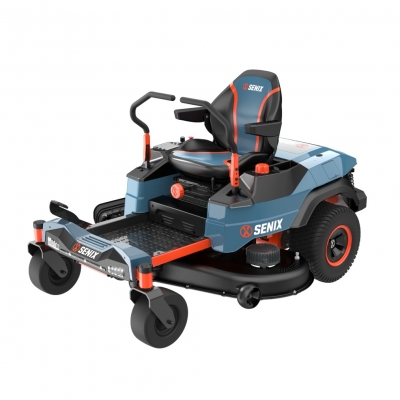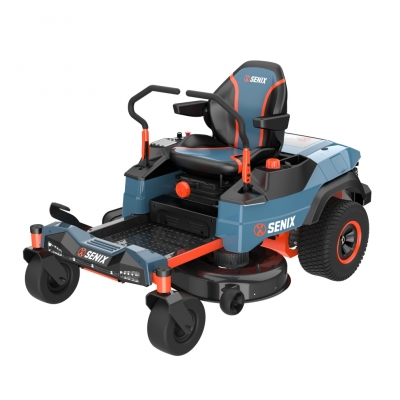How to Use a Pressure Washer: Your Start-to-Finish Guideline
So, you've unboxed that shiny new pressure washer—congratulations! You're holding the key to transforming grimy driveways, mossy decks, and dingy patio furniture into spaces that look brand new. But before you unleash the hydro-powered beast, let's walk through every step together.
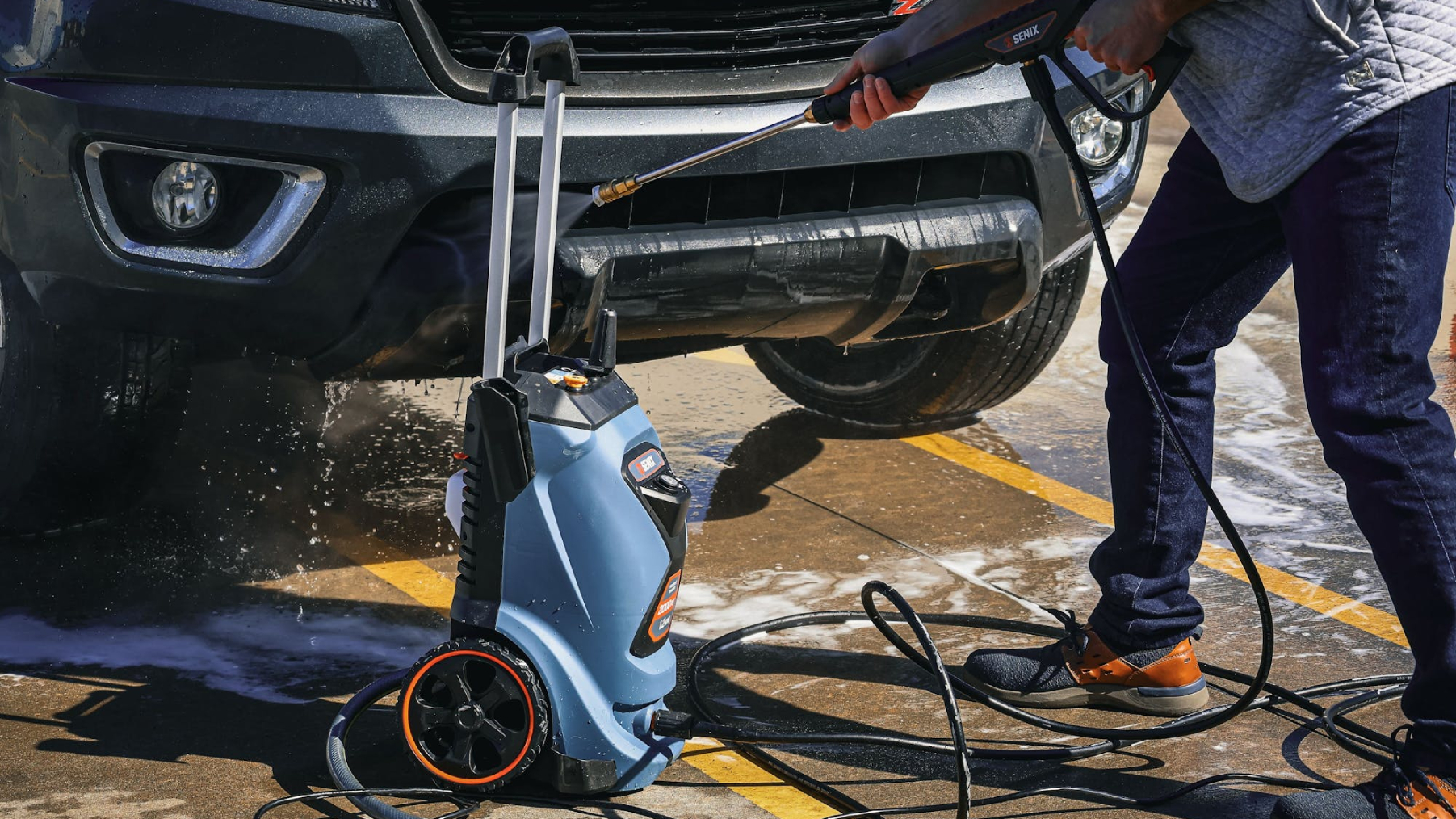
Unbox Like a Pro: First Impressions Matter
Inspect Your Gear with Eagle Eyes
Lift out the pressure washer unit, hoses, spray wand, and that little box of color-coded nozzles. Check for shipping damage—cracks, dents, or leaks. For gas pressure washer users, pop the hood and verify oil and fuel caps are sealed tightly. A small leak now can mean a messy disaster later!
Installation: The 3 Lifelines You Can't Skip
Step 1: Water Supply—The Lifeline
Attach your garden hose to the pressure washer's "Water Inlet" valve. Twist it clockwise until it's snug—no drips allowed! Now, turn the faucet on FULL blast. Let water run for 30 seconds to flush out sand or debris lurking in the pipes.
Critical Safety Note: Always connect water BEFORE power. Running a dry pump is like revving a car engine with no oil—it'll self-destruct in seconds.
Step 2: Power Up – Juice It Right
Electric Pressure Washers:
Plug into a grounded outdoor outlet. If you need an extension cord, use one rated for outdoor or industrial use—max 25m (82ft). Anything flimsier will overheat!
Gas Pressure Washers:
Check the oil dipstick—it should show "Full" between the marks. Fill the tank with unleaded gas (add fuel stabilizer if storing longer than 30 days). Pro tip: Do this outdoors; gas fumes indoors are a fire hazard.
Step 3: Attach the Spray System—Your Magic Wand
Click the spray wand into the gun handle until it clicks. Then, twist your chosen nozzle onto the wand's tip. A suggestion is to start with the GREEN (25°) nozzle—it's the Goldilocks of pressure: strong enough for dirt, gentle enough to avoid accidents.
First Spray: Test, Aim, and Conquer
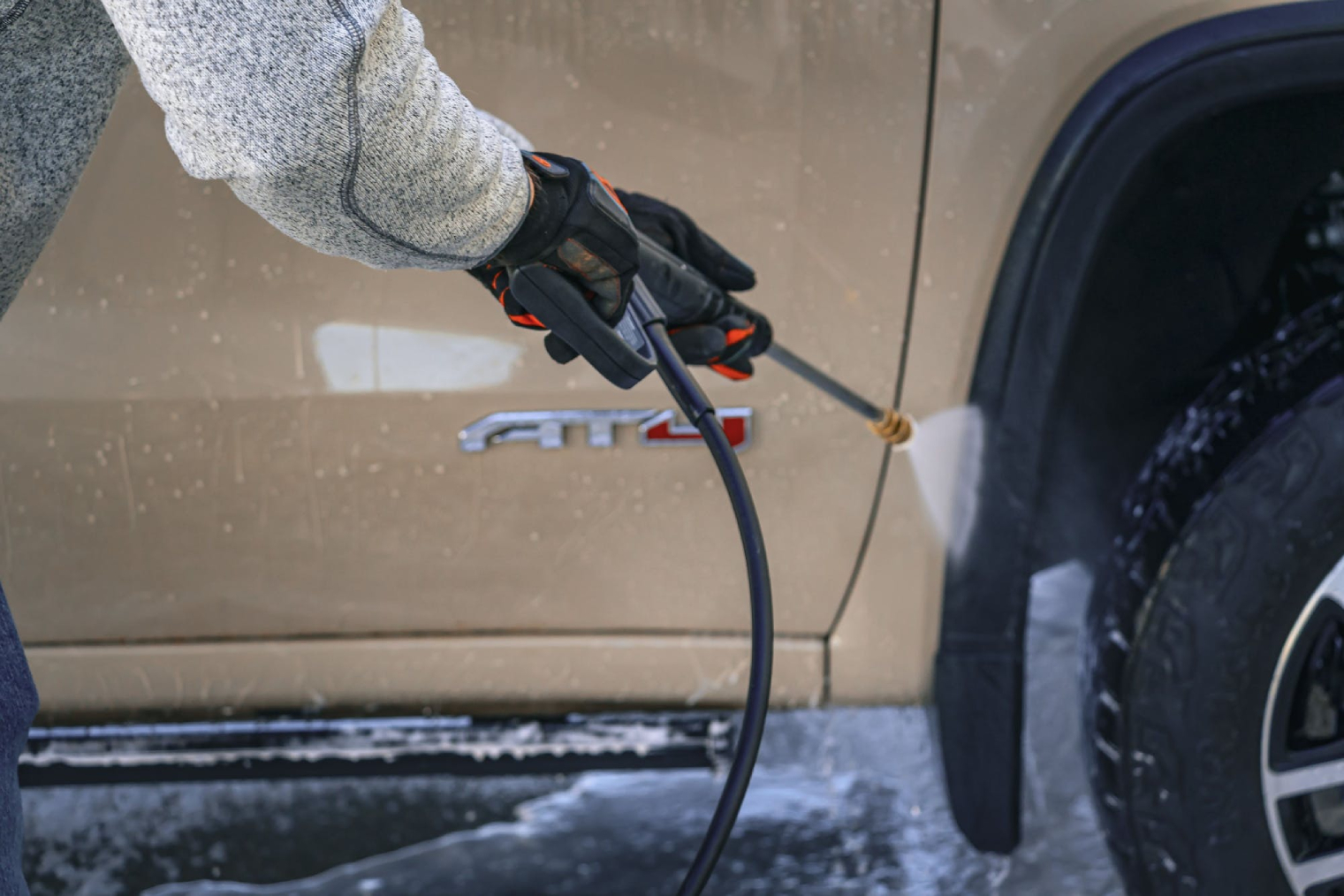
Pre-Spray Ritual (Non-Negotiable!)
- Slip on impact-resistant goggles and waterproof gloves (trust us, gravel will ricochet).
- Clear the area of kids, pets, and breakables. That high-pressure washer's stream can launch a pebble like a bullet.
- Always point the wand at the ground before pulling the trigger—your future self will thank you.
Step 1: Prime the Pump— Silence the Sputter
Squeeze the trigger for 20–30 seconds until your pressure washer's water flows smoothly and steadily. If it coughs or sputters, keep going! Air pockets cause uneven pressure and damage pumps.
Step 2: Test Spray—Start Small, Win Big
Aim the pressure washer wand at a hidden corner of your driveway or fence. Hold the wand 18–24 inches (45–60 cm) away. Spray briefly, then inspect:
If dirt lifts easily, that is perfect; while if the surface is etched or damaged, you need to switch to a wider nozzle (WHITE/40°) or increase the distance.
Step 3: Master the Motion— Dance with the Wand
After adapting to the pressure washer's water flow, sweep side-to-side like you're spreading butter on toast—slow, fluid strokes. If you want to do it like a pro, overlap each pass by 50% to avoid "tiger stripes" (those annoying clean/dirty lines). Besides, on walls or fences, work top-down. Gravity pulls dirt downward, and fighting it causes streaks.
Game-Changer Tip: Always start moving the wand BEFORE pulling the trigger. A stationary blast digs trenches in concrete!
Task-Specific Settings: Work Smarter, Not Harder
Surface | Nozzle | Distance | Detergent? |
Concrete/Driveway | Yellow (15°) | 12" (30 cm) | Yes! Oil stains need a degreaser. |
Wood Decks | Green (25°) | 18" (45 cm) | Wood-safe soap prevents graying. |
Vinyl Siding | White (40°) | 24" (60 cm) | Optional (mold needs bleach mix). |
Cars/Bikes | White (40°) | 36" (90 cm) | Car shampoo only—household soaps strip wax! |
Detergent Deep Dive:
1. Switch to the BLACK nozzle (low pressure for soap).
2. Fill the detergent tank with solution—never use bleach in a metal tank!
3. Spray until the surface is foamy like a cappuccino. Let it "dwell" 5–10 minutes (soap breaks down grime).
4. Critical: Switch back to a cleaning nozzle BEFORE rinsing.
Shutdown Ritual: Save Your Machine's Life
1. Release pressure: Squeeze the trigger until water stops flowing. Trapped pressure strains seals.
2. Kill power: Unplug electric models or turn off gas engines.
3. Disconnect hoses: water first (prevents backflow), then power.
4. Drain ALL water: Hold the gun and the wand tip-down. Shake until drips stop.
5. Winter users: Blow compressed air through the system to prevent frozen cracks.
Storage Rules to Live By:
Store indoors or in a sealed shed. Humidity corrodes metal parts.
Gas pressure washers: Add fuel stabilizer → run engine 2 minutes to coat the system.
Troubleshooting: Fix It in 5 Minutes
Issue | Diagnose & Fix |
Weak pressure | 1. Check for hose kinks → 2. Clean nozzle filter (often clogged with silt) |
Gas engine won’t start | 1. Old fuel? Drain tank → 2. Check spark plug gap → 3. Clean air filter |
Water leak | Tighten fittings with a wrench → replace worn O-rings ($2 fix!) |
Pulsing spray | Air in system → re-prime with water for 1 full minute |
Ready for your dirt demolition debut? Grab that wand, suit up, and transform grime into glory. Contact us to get more useful information about SENIX pressure washers!

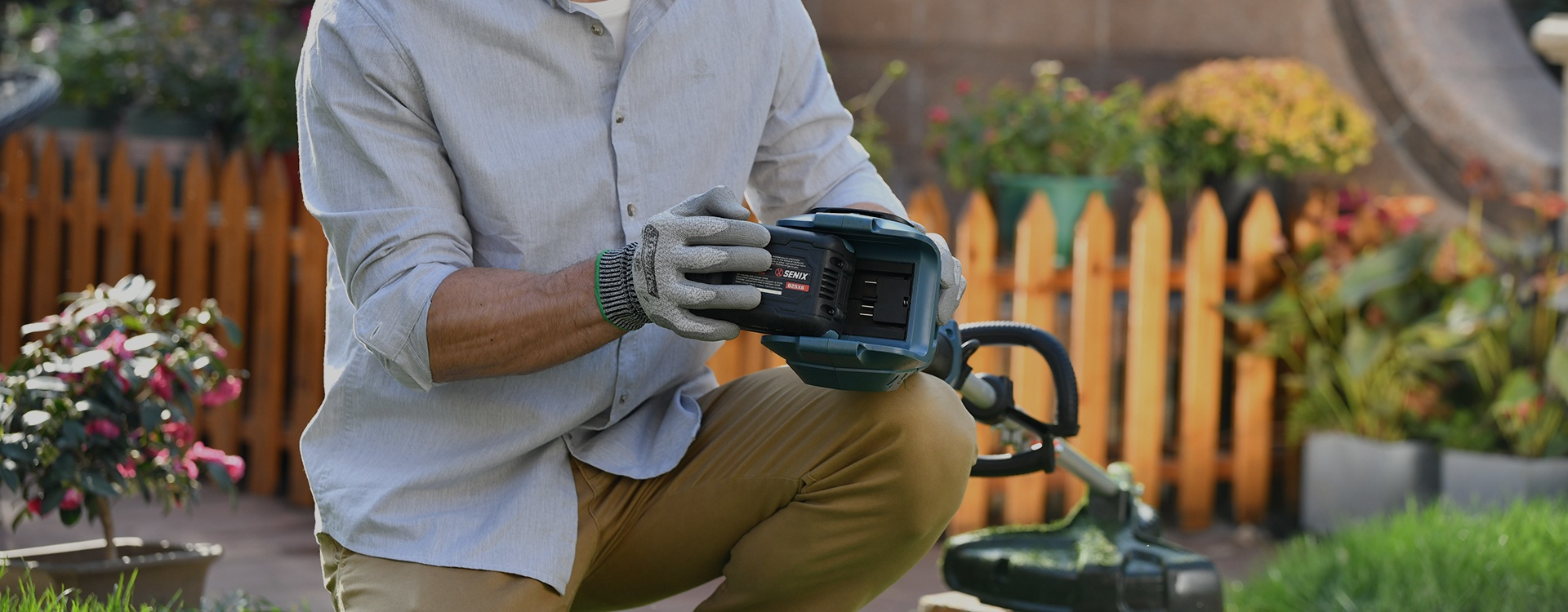
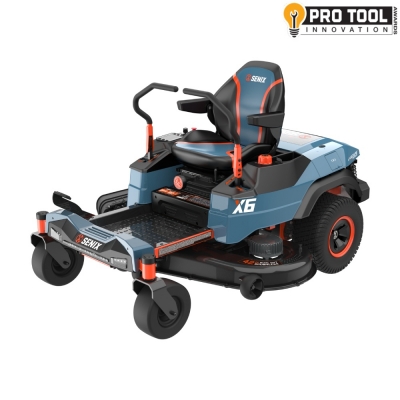
 (5.0)
(5.0)